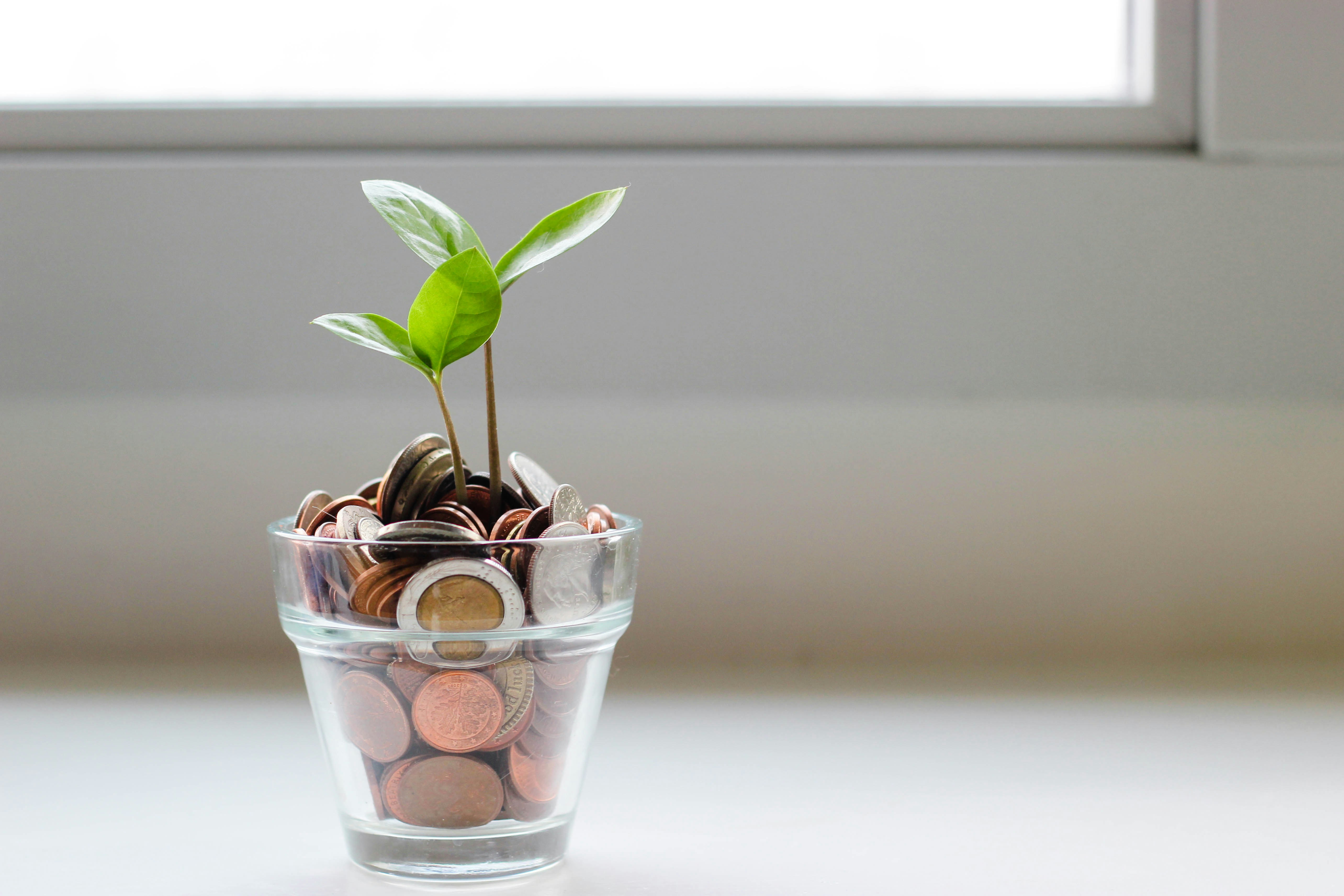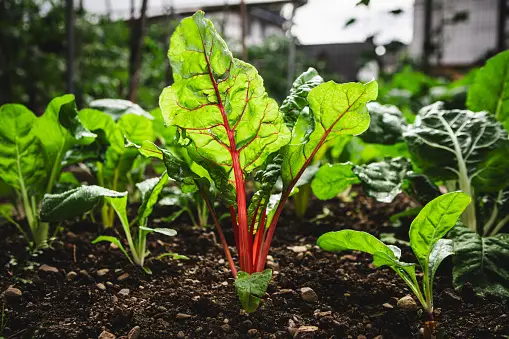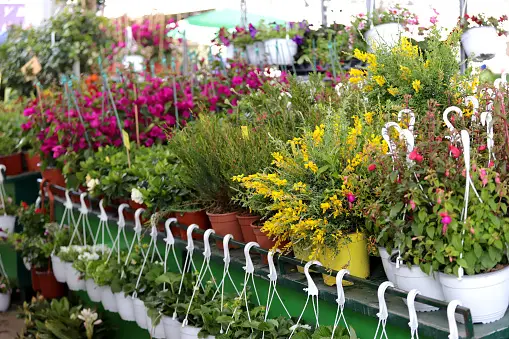Learn how to choose the best plant that are harsh weather resistant for your garden in Kenya.
Cultivating Your Dream Garden: Choosing the Perfect Plants for Your Space
Imagine stepping into a vibrant haven – a symphony of colours bursting from blooming flowers, the intoxicating fragrance of fresh herbs, and the promise of delicious home-grown vegetables. Creating a thriving garden is an aspiration for many, but navigating the vast selection of plants can be daunting. Fear not, aspiring gardener! This comprehensive guide equips you with the knowledge and strategies to confidently select the perfect plants for your home garden, ensuring a flourishing green space that reflects your personality and thrives in your unique environment.
Laying the Foundation: Understanding Your Garden's Ecosystem
Before diving headfirst into seed packets and plant catalogues, take a step back and analyse your garden's specific ecosystem. This crucial first step helps you choose plants that will effortlessly adapt and flourish in your unique space. Here are three key aspects to consider:
-
Climate:
- USDA Plant Hardiness Zone: This zone classification system, developed by the United States Department of Agriculture (USDA), indicates the average annual minimum temperature in your region. Knowing your zone is paramount, as it helps you choose plants that can withstand your winter chills or summer heat extremes. Consult a plant hardiness zone map to identify your zone and select plants labelled with corresponding hardiness zones to ensure their survival.
-
- Microclimates: Within your garden, microclimates might exist with slightly different temperature variations. South-facing walls might receive more intense heat, while areas under trees offer cooler, shadier environments. Observe these microclimates throughout the day to plan for diverse plant needs within your overall garden layout.
-
Sun Exposure:
- Mapping Your Sunlight: Sunlight availability is a critical factor for plant growth. Observe your garden throughout the day, noting the areas that receive full sun (direct sunlight for at least 6-8 hours), partial sun (dappled sunlight for 4-6 hours), and full shade (little to no direct sunlight).
-
- Matching Plants to Light Levels: Once you have a map of your sun exposure zones, research plants that thrive in those specific light conditions. Full-sun vegetables like tomatoes and peppers wouldn't fare well in full shade, while shade-loving ferns and hosts would struggle in direct sunlight.
-
Soil Composition:
- Soil Testing: Understanding your soil composition is vital for selecting plants that will thrive. Conduct a simple soil test to assess the pH level (acidity or alkalinity) and nutrient content. Soil testing kits are readily available at garden centres or online.
-
- Soil Types and Plant Preferences: Sandy soils drain quickly and may require more frequent watering, while clay soils can be dense and retain too much moisture. Some plants prefer acidic soil (pH below 7), while others flourish in neutral (pH around 7) or alkaline (pH above 7) conditions. Amending your soil with compost or organic matter can significantly improve its fertility and drainage to better accommodate your desired plant selections.
Selecting the Stars of Your Garden: Matching Plants to Your Ecosystem
Now that you have a detailed understanding of your garden's ecosystem, you can embark on the exciting journey of selecting the perfect plants. Here's a breakdown of key factors to consider when choosing plants:
- Light Needs: As previously mentioned, light availability plays a crucial role. Research plants specifically suited to your sun exposure levels. Full-sun perennials like lavender and coneflowers add bold colour and require minimal maintenance. Hosts and impatiens provide vibrant foliage in shady areas, perfect for adding a touch of life to north-facing walls or under tree canopies.
- Soil Preferences: Match your plant selections to your soil's pH and nutrient content. If your soil is acidic, blueberries and azaleas will thrive. Conversely, vegetables like asparagus and beets prefer slightly alkaline soil. Amending your soil with organic matter like compost or specific amendments can adjust the pH to better suit your desired plants.
- Water Requirements: Consider your lifestyle and water availability when choosing plants. Drought-tolerant plants like succulents and ornamental grasses are perfect for drier climates or those with limited time for watering. Conversely, moisture-loving vegetables like lettuce or leafy greens might require more frequent watering, especially during hot summers.
- Mature Plant Size: Plan for the future! Research the mature size of plants before planting to avoid overcrowding your garden. Opt for dwarf varieties of popular plants for smaller spaces. Vertical gardening techniques like trellises or hanging baskets can also maximize space usage for vining plants or cascading flowers.
- Pollination Requirements: Some plants require specific pollinators like bees or butterflies to produce fruit or set seeds. Consider incorporating flowering plants throughout your garden to attract these vital pollinators. Fragrant herbs like lavender and borage are not only aesthetically pleasing but also attract beneficial insects to your garden ecosystem.
Beyond The Basics
While the core principles of light, soil, and water needs form the foundation for plant selection, there are several additional factors to consider for a truly flourishing and personalized garden:
· Bloom Time and Seasonality: Do you dream of a garden bursting with colour all season long? Research plants with staggered bloom times. Early spring bulbs like daffodils and tulips give way to vibrant summer flowers like zinnias and petunias. Include fall-blooming perennials like chrysanthemums and asters to extend the visual interest even after summer's heat subsides.
· Maintenance Needs: Consider your lifestyle and time commitment when selecting plants. Low-maintenance options like ornamental grasses or wildflowers require minimal care, while some rose varieties might need regular pruning and deadheading to maintain their beauty.
· Pest and Disease Resistance: Certain plant varieties are more resistant to common pests and diseases in your region. Researching and selecting these varieties can minimize the need for pesticides and ensure healthier plants.
· Personal Preferences: This is your garden, so prioritize plants that resonate with your personal style! Do you crave vibrant colours and fragrant blooms? Do you envision a serene haven with calming greenery? Opt for plants that evoke the emotions and aesthetics you desire in your outdoor space.
· Edible Delights: If fresh, home-grown food is your passion, incorporate vegetables, herbs, and even fruit trees into your garden design. Choose vegetables suited to your climate and planting zones. Herbs like basil, parsley, and mint add a touch of freshness to your culinary creations and can be grown in containers for easy access.
· Wildlife Friendliness: Consider creating a haven for beneficial insects and pollinators. Include native plants that provide nectar and pollen sources for butterflies, bees, and hummingbirds. These creatures enhance your garden's ecosystem and contribute to healthy plant growth by facilitating pollination.
Pro Tip: Don't be afraid to experiment! While research is crucial, there's always an element of trial and error in gardening. Observe how plants perform in your specific environment and adjust your selections over time. With experience, you'll gain a deeper understanding of your garden's unique personality and the plants that thrive in it.
Additional Resources to Empower Your Garden Journey:
· Local Nurseries and Garden Centres: These invaluable resources offer personalized recommendations based on your specific region's climate and microclimates. Experienced staff can answer your questions, suggest suitable plants, and provide guidance on best practices for your garden.
· Online Plant Databases: Numerous online resources like those offered by botanical gardens or gardening websites provide detailed information on specific plant varieties, including their sun, soil, and water requirements, mature size, bloom time, and maintenance needs.
· Gardening Books and Magazines: A wealth of knowledge awaits in the world of gardening publications. These resources offer inspiration for garden design, detailed planting guides, and troubleshooting tips for overcoming common challenges.
By delving into the world of plant selection with a holistic approach, you can transform your outdoor space into a thriving haven. Remember, a successful garden is a dynamic ecosystem that reflects your personality, caters to your lifestyle, and flourishes under your care. So, embrace the journey of discovery, get your hands dirty, and cultivate a garden that brings you joy and beauty for years to come.
Conclusion
Choosing the perfect plants for your home garden is the first step on a captivating journey. As you delve deeper into the world of gardening, you'll discover that it's not just about selecting plants, but about cultivating harmony – harmony between your vision and reality, between the plants themselves, and between your garden and the surrounding environment.
Embrace the learning process. There will be unexpected successes and occasional setbacks. Observe how plants respond to their environment, adapt your approach when necessary, and don't be afraid to experiment. With each season, your understanding of your garden's unique personality and the plants that thrive within it will deepen.
Gardening fosters a sense of community. Share your knowledge and experiences with fellow gardening enthusiasts. Swap seeds, offer advice, and celebrate each other's triumphs. Local gardening clubs and online forums provide a platform for connection, inspiration, and the collective pursuit of creating vibrant green spaces.
The rewards of a thriving garden extend far beyond the visual beauty and delicious home-grown produce. The therapeutic benefits of nurturing life and witnessing the magic of nature unfold are undeniable. Gardening provides a sanctuary from daily stress, a place to connect with the earth, and a source of immense satisfaction.
As your garden flourishes, so too will your appreciation for the delicate balance of the natural world. You'll witness the intricate dance of pollinators flitting from flower to flower, the tireless work of earthworms enriching the soil, and the vital role beneficial insects play in maintaining a healthy ecosystem. This newfound respect for nature translates into a more sustainable approach to living, encouraging conscious consumption and a desire to protect the environment.
Ultimately, cultivating a garden is a lifelong journey of discovery, creativity, and connection. It's a space where you can express yourself through plant choices and design, a canvas where you paint with vibrant blooms and verdant foliage. It's a testament to your dedication, a space that nourishes your body and soul, and a haven that welcomes both serenity and the joyful celebration of a bountiful harvest.
So, step outside, feel the warmth of the sun on your skin, and embrace the wonder of your garden. With each seed you sow, each plant you nurture, and each harvest you reap, you contribute to a more vibrant and flourishing world, one beautiful garden at a time.


























